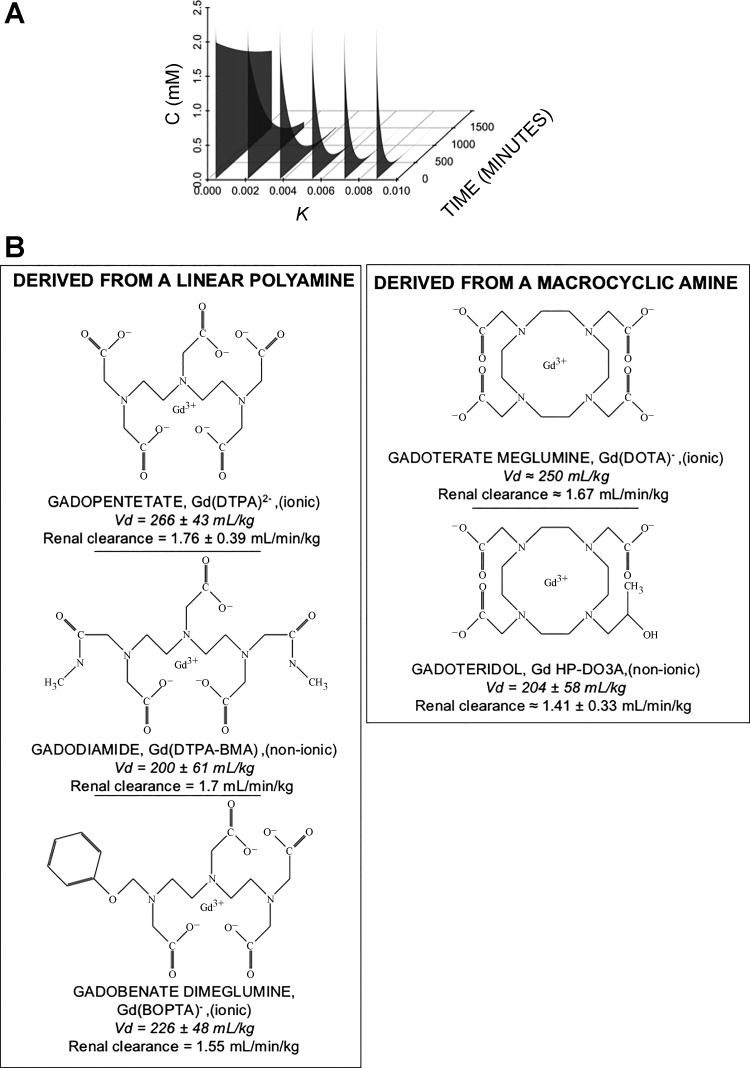Fig. 1.
Gadolinium-based contrast: renal clearance and their chemical structures. A: clearance of intravascular contrast. Most contrast agents, whether iodinated or gadolinium based, are eliminated by renal excretion. The concentration of the substance (C) can be determined by a clearance equation. The United States Food and Drug Administration-approved dose of most gadolinium-based contrast is 0.1 mmol/kg. After distribution, with a volume of distribution that is almost entirely the extracellular space, the rapidity of elimination of contrast is determined by renal function. Curves were created based on the reported half-life for magnetic resonance contrast (i.e., the far-right curve) and reducing the rate constant, k, by 20% (modeling the elimination with worsening renal function). B: the various chemical structures of commonly used gadolinium ligands. In general, these can be grouped as being somewhat “linear” or macrocyclic. Note that the number of carboxylic acid side chains determines whether the chelate has a neutral charge (“nonionic”) or not (“ionic”) (3). Vd, volume of distribution.

